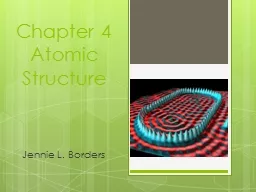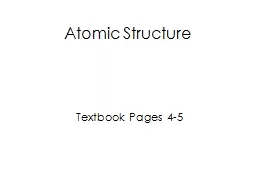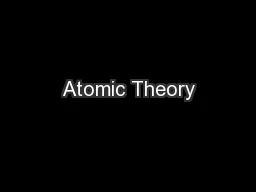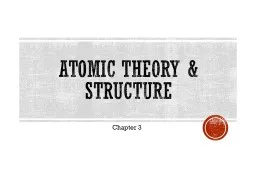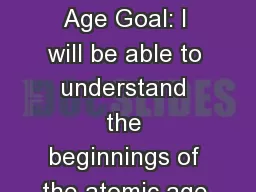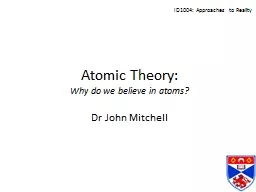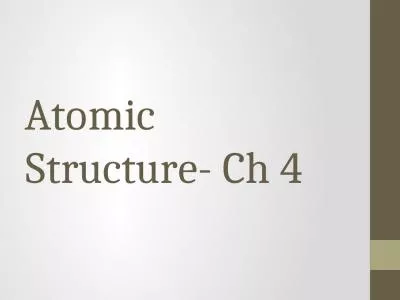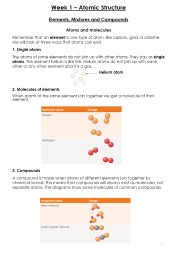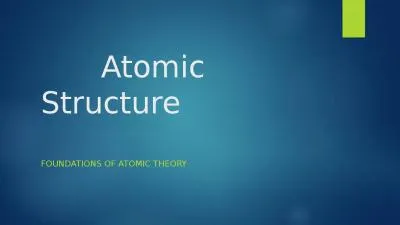PPT-Chapter 4 Atomic Structure
Author : mitsue-stanley | Published Date : 2018-11-01
Jennie L Borders WarmUp Feb 24 What did Rutherford discover What charge does a neutron have How many electrons can the first energy level hold Section 41 Studying
Presentation Embed Code
Download Presentation
Download Presentation The PPT/PDF document "Chapter 4 Atomic Structure" is the property of its rightful owner. Permission is granted to download and print the materials on this website for personal, non-commercial use only, and to display it on your personal computer provided you do not modify the materials and that you retain all copyright notices contained in the materials. By downloading content from our website, you accept the terms of this agreement.
Chapter 4 Atomic Structure: Transcript
Download Rules Of Document
"Chapter 4 Atomic Structure"The content belongs to its owner. You may download and print it for personal use, without modification, and keep all copyright notices. By downloading, you agree to these terms.
Related Documents

